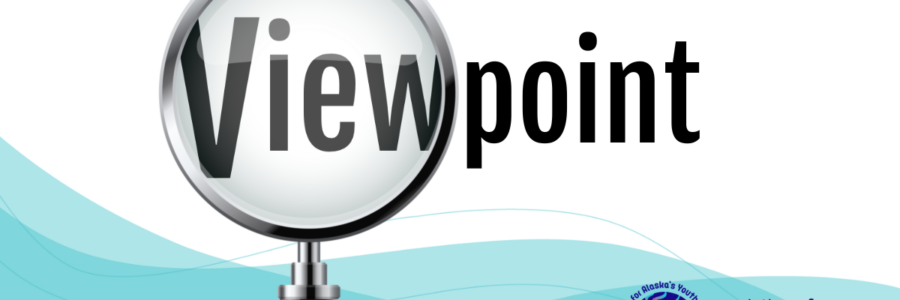
Public School Investment and Student-Centered Innovation Can Achieve Education Success

The state of Alaska has always statutorily fulfilled its responsibility to Article 7, Section 1 of Alaska’s Constitution, requiring the “maintenance” of a system of public education. However, for over a decade, it has not sufficiently invested the resources necessary to ensure every student receives an excellent education every day.
Public schools are a complex system that requires a myriad of operational costs to be met. Those costs have all increased dramatically. As a result, the resources to employ the staff needed to run schools, deliver educational support, and, most importantly, instruction have been reduced. The opportunities for students to succeed diminish, and we see declines in many indicators of student achievement.
It is unfortunate that the Alaska Policy Forum continues to perpetuate a narrative based on a simplistic and superficial analysis of data that ignores the context, complexity, and requirements of operating public schools in Alaska. Today, more students require special education services, English language learner support, social-emotional support, increased hunger, poverty, and risk a greater chance of a cultural disconnect with their instruction.
The Alaska Policy Forum’s Sarah Montalbano asserts that increases in education funding have gone primarily to administration and non-instructional expenses. The implication is that school boards are allocating more resources outside of the classroom and not associated with instruction. This is not true. When I compared the audited expenses for 2021, 2011, and 2005 for individual districts and the state, I found no significant difference in the allocation of funds to instructional expenses versus non-instructional. In fact, it has improved slightly.
| Fiscal Year | Non-instructional | instructional |
| 2005 | 27 % | 73 % |
| 2011 | 25 % | 75 % |
| 2021 | 23 % | 77 % |
Data from the AK DEED website Budgets and Actual Reporting
Tennessee has been suggested as an example of a school system showing significantly greater student outcomes than Alaska. The Hechinger Report recently found that when schools in rural Tennessee embedded career guides, the result was a huge jump in the number of students pursuing postsecondary opportunities – the two-year, four-year, career tech, and military or volunteer service training that prepare today’s students for tomorrow’s jobs and leadership roles. These guides also play a key role in helping students access free federal funds to help pay for the training they need by completing the FAFSA – the Free Application for Federal Student Aid.
Tennessee currently has one of the nation’s highest FAFSA completion rates, while Alaska ranks 51st. University of Alaska President Pat Pitney has noted that if Alaskan students and their families fill out the form at the average rate of those in other states, Alaskans could tap into $9 million in free federal funding. If we completed the form at the same rate as students from Tennessee, that would give Alaskan students access to a whopping $15 million in free funding for postsecondary education.
Here’s the thing: when our schools have the resources to provide support, our students do better. For example, when Bethel Regional High School had embedded career guides for five years through the Alaska College & Career Guides program, Bethel’s FAFSA completion rate rose to a high of 85% in 2016, and its postsecondary going rate rose to 65%. Compare that with the 28% of Alaskan seniors who completed the FAFSA last year, or the 37% of 2020 high school graduates who enrolled in postsecondary within a year of graduation, according to the Higher Education Almanac.
Unfortunately, like so many essential and under-appreciated support programs over the past seven years, the Bethel program ended as a result of budget cuts. And so did their phenomenal outcomes. Bethel’s postsecondary attendance rate is now on par with the rest of the state’s worst-in-the-nation ranking.
Putting funding towards classrooms and keeping class sizes small is an important strategy. But we can’t forget that administrative and non-teaching support staff play a crucial role in allowing classroom teachers to perform their craft. A career guide position, for example, costs less than a teacher or counselor. And the return on the investment is clearly quite high, and Alaskan employers would benefit from a better-prepared workforce.
School boards struggle every year to balance the needs of a complex system and allocate funds accordingly. We must embrace a paradigm of continuous improvement and be ready to invest in strategies that demonstrate improvement. AASB is working with the Alaska Commission on Postsecondary Education and school districts to understand all of the components that have led to better outcomes like the one in Bethel.
One thing is clear: less is less. AASB advocates for funding public education that connects families and students to a world of possibilities. Our teachers need the support of many professionals to make their time with students as effective as possible. Teachers alone cannot do it all; just ask them.
Lon Garrison
Executive Director
Association of Alaska School Boards
NOTE: This article is a rebuttal to an Alaska Policy Forum op-ed that appeared in the Anchorage Daily News on 2/15/23.
